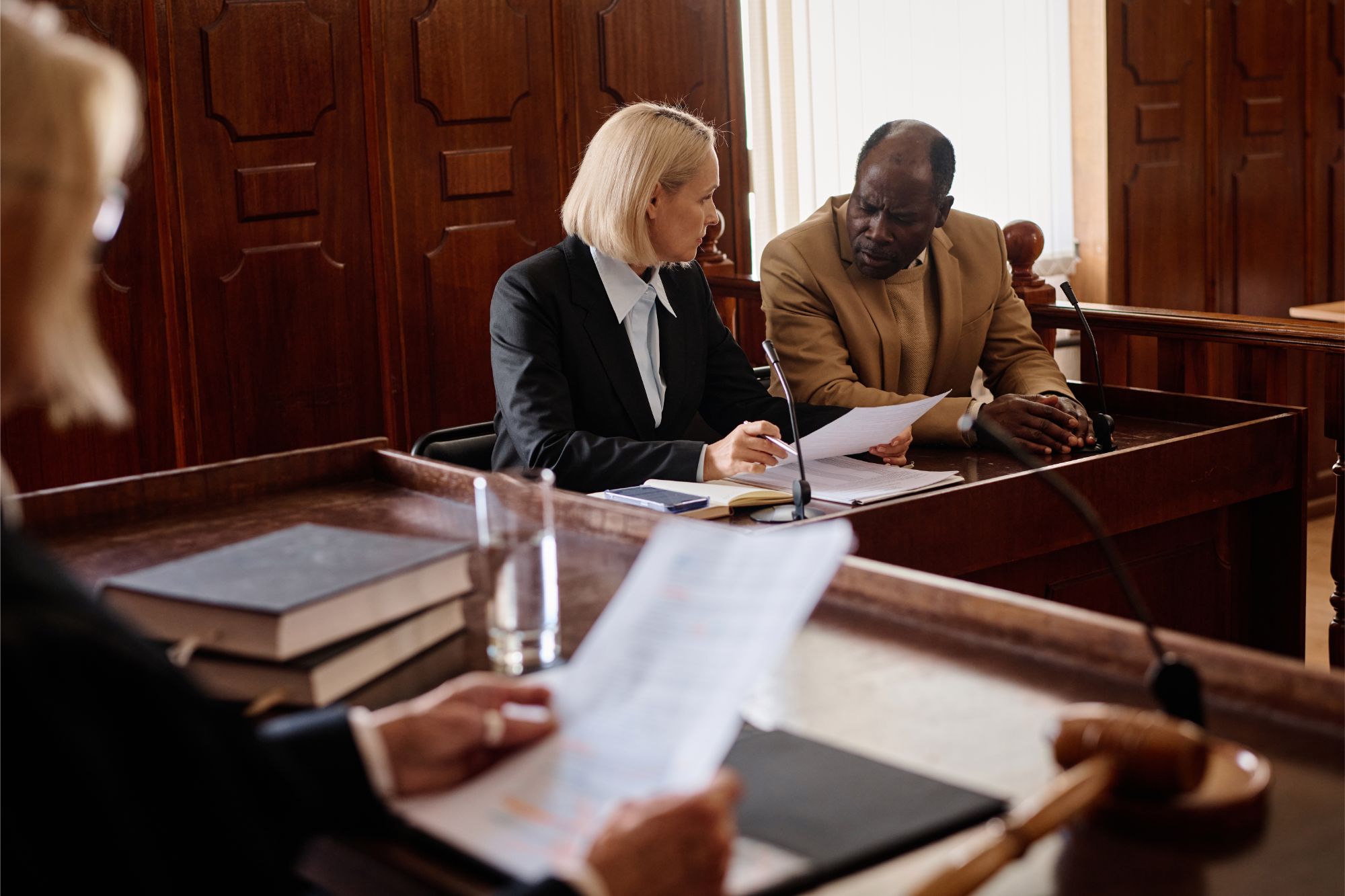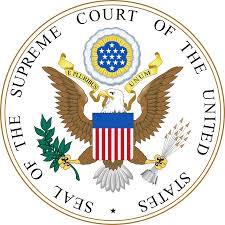
In this post, I’ll explain how Rule 19, addressing required parties, works. The Rules establish a number of procedures governing who may, or must, be included as parties in a lawsuit. Initially, the plaintiff or plaintiffs decide who to include in an action. Rule 20 is the primary rules-based limitation on whether the complaint may name multiple plaintiffs or defendants, and it only requires a minimal amount of relatedness among the multiple plaintiffs or defendants. (Of course, for every claim proceeding in federal court, the court must have subject-matter jurisdiction over the claim and personal jurisdiction over the parties and venue as well.)
Once the plaintiff has chosen the parties to include in the complaint, the defendant has some rights to add parties. The defendant may implead new parties under Rule 14 or may assert a counterclaim against the plaintiff and add parties as defendants to the counterclaim as provided by Rule 13(h). Additionally, nonparties may seek to intervene in the litigation to protect their interests, either as of right under Rule 24(a) or permissively under Rule 24(b).
Rule 19 provides another set of procedures when existing parties or nonparties believe that important persons or entities are missing from the litigation. By way of overview, Rule 19 establishes a three-step inquiry. First, the court must determine whether an absent nonparty is a “person required to be joined if feasible” under Rule 19(a). If so, the court next must determine whether joinder of that party is feasible. If joinder is feasible, the court may order the joinder of the nonparty as either a plaintiff or a defendant. If joinder is not feasible, the court must then determine whether, in equity and good conscience, the action should proceed without the required party or should be dismissed.
Step 1: Determining Whether a Nonparty is a Required Party
The first step of the Rule 19 process requires that the court determine whether the identified nonparty is a “required party.” Rule 19(a) establishes three scenarios that render a nonparty a required party. First, under Rule 19(a)(1)(A), a party may be required to be joined to an action if “in that person’s absence, the court cannot afford complete relief among existing parties.” This scenario focuses only on the rights of the existing parties, without considering the effects of a decision on the nonparty. See Prisco v. Moss, 2025 WL 814377 (W.D. Wash. 2025); Equal Emp. Opportunity Comm’n v. Sunnybrook Educ. Ass’n, IEA-NEA, 712 F. Supp. 3d 1093, 1098 (N.D. Ill. 2024). For example, when one Indian tribe sues a state for exclusive fishing rights and does not join other Indian tribes with competing claims for fishing rights, a ruling by the court would not afford complete relief to the parties. See Citizen Potawatomi Nation v. Norton, 248 F.3d 993 (10th Cir. 2001).
The second scenario, found in Rule 19(a)(1)(B)(i), occurs when the nonparty’s interest might be impaired legally or is designed to avoid the harsh results of rigid application without that nonparty’s participation. The interest of the nonparty must be a legally protected interest, not merely some stake in the outcome. See Jamul Action Comm. v. Simermeyer, 974 F.3d 984, 996 (9th Cir. 2020). For example, when a plaintiff seeks to recover from a limited fund controlled by the defendant and a nonparty also has a claim against the fund, the court may join the nonparty so as to protect that nonparty’s possibility of sharing in the fund before it is exhausted. See In re Torcise, 116 F.3d 860, 865 (11th Cir. 1997).
The third scenario, found in Rule 19(a)(1)(B)(ii), occurs when the nonparty has an interest relating to the subject of the action and disposing of the action in the person’s absence may leave an existing party subject to a substantial risk of incurring double, multiple, or otherwise inconsistent obligations because of the interest. For example, suppose two tenants claim lease rights to a piece of property. If one of the tenants sues the property owner and does not include the other, the landlord might eventually be subject to separate orders requiring that the property be leased to the two different tenants—orders creating inconsistent obligations. See Sorenson v. Sorenson, 64 F.4th 969, 975 (8th Cir. 2023).
This analysis of whether a nonparty is a required party is a “highly-practical, fact-based inquiry” that depends on the totality of the circumstances and is designed to avoid the harsh results of rigid application. Accordingly, the courts have been reluctant to develop categories of persons who will be deemed required parties and instead conduct a case-specific analysis when presented with a Rule 19 issue. See Cook v. Marshall, 126 F.4th 1031 (5th Cir. 2025).
Having said that, there are some categories of nonparties that the courts tend to deem to be required parties. In breach of contract actions, for example, courts often require all parties to the contract to be joined. See, e.g., Dawavendewa v. Salt River Project Agr. Imp. and Power Dist., 276 F.3d 1150, 1156-57 (9th Cir. 2002). When the plaintiff seeks injunctive relief, all the persons or entities who would be subject to the injunction are required parties. See, e.g., Donald J. Trump for President, Inc. v. Boockvar, 493 F. Supp. 3d 331, 374 (W.D. Pa. 2020). Finally, a shareholder’s derivative suit against a corporation typically makes the corporation itself a required party. See, e.g., Ravenswood Investment Co. L.P., v. Avalon Correctional Services, 651 F.3d 1219, 1225 (10th Cir. 2011).
If the court determines that the nonparty is not a required party, the Rule 19 analysis is over. See Cook v. Marshall, 126 F.4th 1031 (5th Cir. 2025). If, on the other hand, the court deems a nonparty to be a required party, it must then decide whether the nonparty may be joined.
Step 2: Determining Whether the Required Party may be Joined
The primary reasons that might prevent a nonparty from being joined are that the nonparty is not subject to personal jurisdiction in the court where the action is pending or that the nonparty would destroy diversity jurisdiction or venue if joined to the action. See Prisco v. Moss, 2025 WL 814377 (W.D. Wash. 2025). Additional considerations may prevent the joinder of a nonparty, such as the nonparty’s sovereign immunity. See Maverick Gaming LLC v. United States, 123 F.4th 960 (9th Cir. 2024).
Step 3: Determining How to Proceed
If joinder of the nonparty is possible, Rule 19(a)(2) authorizes the court to order that nonparty’s joinder, either as a defendant, a plaintiff, or even an involuntary plaintiff. See Prisco v. Moss, 2025 WL 814377 (W.D. Wash. 2025).
If joinder is not possible, then the court must proceed to the final stage of the Rule 19 analysis, the decision as to whether to proceed without the required party or to dismiss the action, which is addressed in Rule 19(b).
Rule 19(b) lists four factors to consider when a required party cannot be joined:
(1) the extent to which a judgment rendered in the person’s absence might prejudice that person or the existing parties;
(2) the extent to which any prejudice could be lessened or avoided by:
(A) protective provisions in the judgment;
(B) shaping the relief; or
(C) other measures;
(3) whether a judgment rendered in the person’s absence would be adequate; and
(4) whether the plaintiff would have an adequate remedy if the action were dismissed for nonjoinder.
Although the court has considerable discretion to determine, under the considerations listed in Rule 19(b), whether to continue the litigation without the person or to dismiss the action because a party cannot be joined, courts generally prefer to continue the action rather than dismiss it. See Zenith Ins. Co. v. Texas Inst. for Surgery, LLP, 2018 WL 5297754 (N.D. Tex. 2018). Thus, a defendant who has filed a motion to dismiss under Rule 12(b)(7) for failure to join a required party should contemplate ways to reach a compromise with the court and opposing counsel that continues the suit on terms more favorable to the defendant. Shaping appropriate remedies is one area that might offer particularly good prospects for such terms.
Rule 19 Procedures
There are a number of ways Rule 19 issues may arise. Normally, since the plaintiff picks the parties to sue, Rule 19 issues are raised by defendants. If the nonparty may be joined, the defendant can make a motion under Rule 19(a)(2) to compel joinder of the nonparty. If the nonparty cannot be joined, a defendant may seek dismissal in a Rule 12(b)(7) motion. Alternatively, a defendant may assert the failure to join a required party in an answer or other responsive pleading, in a Rule 12(c) motion for judgment on the pleadings, or at trial. The Rules do not explicitly authorize a motion to dismiss for failure to join a required party at any other time, although the court retains the right to consider a Rule 19 issue sua sponte. Furthermore, although the Rules authorize seeking dismissal under Rule 19 as late as at trial, the court has discretion to reject such a late motion if the court believes that the movant strategically delayed raising the issue. See, e.g., Stooksbury v. Ross, 528 Fed.Appx. 547, 556 (6th Cir. 2013).
The nonparty may also raise Rule 19 issues, although the procedure differs from those used by a defendant. A nonparty may seek to intervene under Rule 24 for the limited purpose of arguing that the case should be dismissed under Rule 19. A nonparty might take that approach, for example, if it has sovereign immunity from the claims in the action but believes that its rights might be impaired if the action moves forward without it. See Maverick Gaming LLC v. United States, 123 F.4th 960 (9th Cir. 2024).
There is one more procedural aspect of Rule 19 to be aware of, although it doesn’t arise frequently in the case law (a Westlaw search did not uncover any cases in the past 15 years citing this provision). Rule 19(c) requires a party seeking relief (such as a plaintiff) to identify any required parties who are not joined in the action and to provide the reason that such parties were not included.
Finally, one nomenclature note: although Rule 19 now uses the term “required party,” previous versions of Rule 19 referred to “necessary” parties—the equivalent of “required” parties—and “indispensable” parties—those in whose absence the action must be dismissed. Although Rule 19 no longer uses those terms, some judges continue to use the old terminology.
Advice
Rule 19 doesn’t come up all that often, but the consequences of ignoring Rule 19 can be significant—dismissal of your case, for example. Thus, it’s important to be sensitive enough to Rule 19 issues to identify them and to recognize the need for further research. This article should serve as a helpful refresher. Much more practical advice is in my treatise, the Federal Civil Rules Handbook.
******
Steve is one of the authors of The Federal Litigator, a monthly publication from Thomson Reuters that reports on cases of general interest to those who practice in the federal courts. Each fall, The Federal Litigator reports on amendments to the federal court rules. This article is an excerpt from the April 2025 edition of The Federal Litigator that is reprinted with the publisher’s permission (© 2025 Thomson Reuters). Further reproduction of any kind is strictly prohibited. For further information about this publication, please click here, or call 800.328.9352. Individual case summaries can be accessed through Westlaw. Steve is also one of the authors of the Federal Civil Rules Handbook, an annual publication from Thomson Reuters containing detailed, practical commentary providing a blueprint for the application of the Federal Rules of Civil Procedure and related jurisprudential concepts. To purchase the Handbook, please click here.


